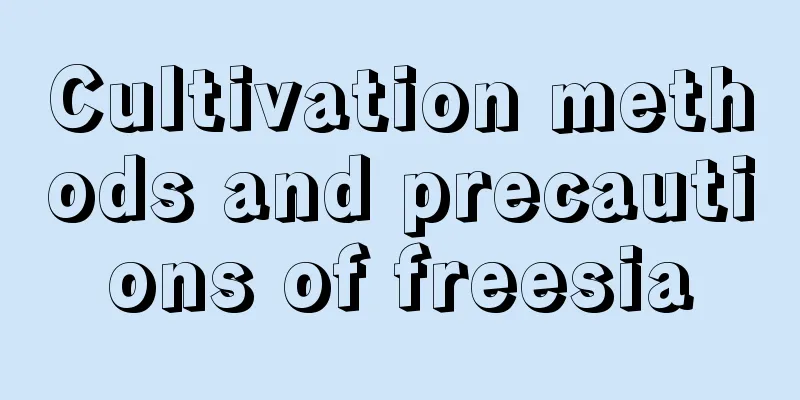What should you pay attention to when growing gardenias?

|
Gardenia is a famous traditional flower in China. With its elegant flowers and charming fragrance, it has become a favorite of many gardening enthusiasts. So what should we pay attention to when growing gardenias? Let’s learn more about it below. 1. Soil Gardenia likes acidic soil. When preparing the soil, in addition to ensuring drainage and fertility, you can also add some acidic substances to adjust the pH value of the soil. Common acidic substances include iron sulfate, aluminum sulfate, etc., which control the pH value between 5.5-6.5. 2. Temperature Gardenia prefers a warm environment, and the most suitable growth temperature is 20-28℃. In summer, you should avoid direct high temperatures, and in winter, you need to take measures to keep warm. 3. Lighting Gardenia likes light and can tolerate semi-shade environment. It needs a certain amount of light on a daily basis to ensure its healthy growth, but it is not suitable for strong sunlight exposure. 4. Moisture Keeping the soil moist is key to healthy gardenia growth, but at the same time, avoid standing water. Watering should follow the principle of "water when dry and water when wet", that is, water sufficiently when the soil surface is dry, but avoid soaking the roots in water to prevent root rot. 5. Fertilization Gardenia likes fertilizer . It is necessary to apply fertilizer in time during the growing season, apply thin fertilizer frequently, and apply phosphorus fertilizer before flowering to help it bloom. When applying fertilizer, usually spread the fertilizer evenly on the soil around the gardenia and then mix it gently with a tool . 6. Pruning Gardenias grow quickly and require regular pruning to maintain their beautiful shape. After the flowering period, cutting off the remaining flowers in time is beneficial to the growth of the plant. 7. Disease prevention Gardenia is very easy to get sick in a high temperature, high humidity and poorly ventilated environment. The leaves infected with bacteria will become moldy and black spots will appear. You can use sterilized scissors to cut off the yellow leaves with black spots, place them in a place with scattered light for 5-8 days to slow down the growth, and then you can maintain them normally later. In general, although gardenia is not difficult to grow, it still requires patience and care. In particular, the above precautions must be taken carefully to provide a suitable growth environment for gardenias, so as to cultivate healthy and beautiful gardenias.
|
<<: Green treasure breeding skills and precautions
>>: When is the best time to plant Houttuynia cordata?
Recommend
How to fertilize succulent plants? What fertilizer is best?
1. Fertilization time The main time period for fe...
How to grow Euphorbia milii
1. Sufficient sunlight Euphorbia milii particular...
When is the best season to plant jasmine?
Jasmine planting season and time The cultivation ...
Methods and techniques for growing peppers
1. Planting time When planting peppers, there are...
Tomato planting, cultivation and management technology
Tomatoes taste sweet and slightly sour, are juicy...
How to water and fertilize the money tree
Watering method The money tree is a relatively dr...
Seeding propagation method of snake eye chrysanthemum
Seed propagation of snake eye chrysanthemum Sowin...
How to care for cherry blossoms after they bloom
Pruning cherry blossoms after blooming Cherry blo...
How tall can the Golden Edge Tiger Pilan grow
1. How high can it grow? The Golden Edge Tiger Pi...
Can white pine be planted in the yard?
Can I grow white pine in my yard? White pine can ...
How to care for kumquat trees in winter
Is the kumquat tree afraid of frost? Kumquat tree...
Ranunculus division propagation method
Division time Division is carried out in Septembe...
How to breed jackfruit
How to propagate jackfruit: Bud grafting method, ...
What kind of soil is best for growing Desert Rose?
Desert rose is a drought-resistant and heat-resis...
What to do after Gloxinia blooms
1. Beheading: 1.Why beheading? If the plant is no...









